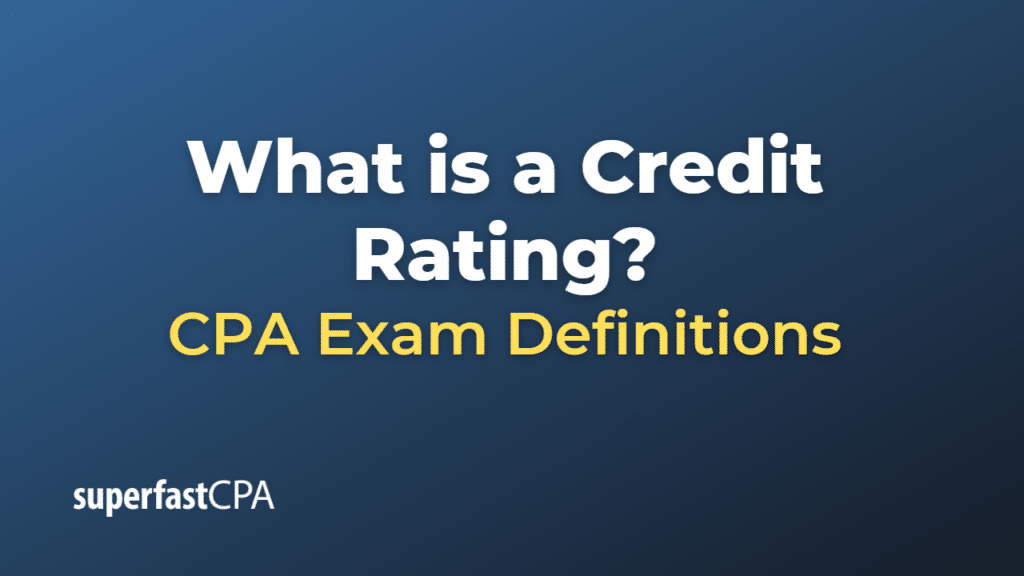Credit Rating
A credit rating is an evaluation of the creditworthiness of a prospective debtor, such as an individual, a business, or a government, predicting their ability to pay back the debt, and an implicit forecast of the likelihood of the debtor defaulting.
Credit ratings are determined by credit rating agencies, such as Standard & Poor’s, Moody’s, and Fitch Ratings, which use a combination of qualitative and quantitative factors to assess the debtor’s ability to meet its financial obligations. These factors can include the debtor’s income levels, existing debt load, and past history of repayment, among others.
For individuals, the credit rating often comes in the form of a credit score, which can impact their ability to secure loans, credit cards, or mortgages, as well as the interest rates they are offered.
For corporations and governments, credit ratings can affect their ability to borrow money, the interest rates lenders charge, and how much it will cost them to issue bonds. Ratings range from AAA or Aaa (the highest rating, indicating very low credit risk) to D (indicating default or very high credit risk).
It’s important to note that a credit rating is just one tool that lenders use to assess credit risk, and it represents the rating agency’s opinion at a specific point in time. Credit ratings can be upgraded or downgraded based on changes in the debtor’s financial condition or other relevant factors.
Example of a Credit Rating
Let’s consider an example in the context of corporate and government bonds.
Imagine a company, let’s say “TechEnterprise Inc.”, wants to issue bonds to raise capital for expanding its operations. Before the bonds are issued, a credit rating agency, like Standard & Poor’s, evaluates TechEnterprise Inc.’s financial health, profitability, debt load, management, and market conditions.
Based on this assessment, the rating agency might give TechEnterprise Inc. a rating of ‘BBB’. In Standard & Poor’s rating scale, ‘BBB’ is considered ‘investment grade’, indicating that the company has a relatively low risk of defaulting on its debt. This rating suggests to potential investors that bonds issued by TechEnterprise Inc. are relatively safe investments.
Now, consider a government, for example, the government of the hypothetical country “Stableland”. Stableland wants to issue bonds to finance infrastructure projects. A credit rating agency reviews Stableland’s economic conditions, political stability, debt levels, and repayment history, and gives it a rating of ‘AA’. In most rating scales, ‘AA’ is a very high rating, indicating a very low risk of default. This high rating can help Stableland borrow money at a lower interest rate, as investors perceive it as a very safe investment.
Remember that credit ratings are subject to change as the financial condition of the company or government changes. If TechEnterprise Inc. takes on too much debt or its profits decline, its rating might be downgraded. Likewise, if Stableland’s economic conditions worsen or political instability increases, its rating might also be downgraded. Conversely, improvements in financial health and stability can lead to upgrades in credit ratings.













